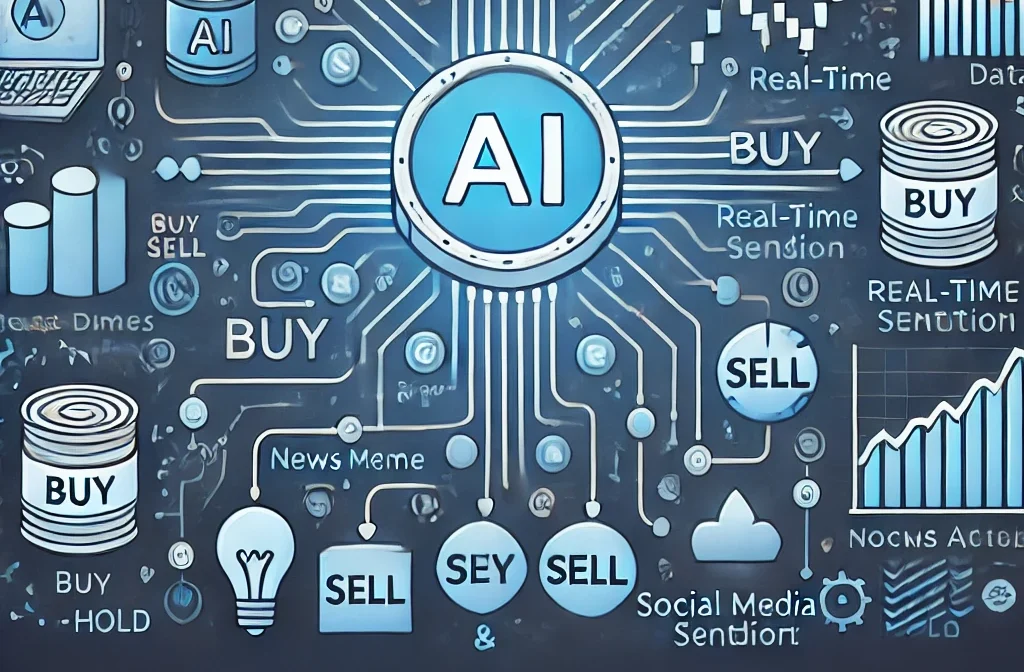Artificial Intelligence (AI) has been transforming numerous industries, and the financial world is no different. AI-powered stock prediction tools are changing how investors approach the stock market, providing data-driven insights and supporting smarter decision-making. These advanced tools utilize machine learning algorithms, big data, and real-time analysis to identify patterns, trends, and signals that may predict future stock price movements. In this article, we’ll deeply dive into how these tools work, their benefits, and what investors should keep in mind when using them.
How Do AI-Powered Stock Prediction Tools Work?
AI-powered stock prediction tools operate through a multi-stage process, combining sophisticated data processing and algorithmic learning to produce actionable insights. Here’s a breakdown of how these systems function:
1. Data Collection and Processing
To generate accurate predictions, AI stock prediction tools must gather and process vast amounts of data:
Historical Data: The tools pull historical stock prices, financial statements, earnings reports, news articles, and market sentiment from social media.
Real-Time Data: They continuously capture real-time market data, economic indicators, global news, and events affecting the financial landscape.
Data Cleaning and Preprocessing: Raw data is cleaned and preprocessed to remove inaccuracies, ensuring the model works with reliable information.
2. Feature Engineering
Feature engineering is the process of identifying and selecting the most relevant data features for predictive modelling.
Identification of Key Features: AI identifies important features such as technical indicators, financial ratios, and market sentiment scores that could influence stock movements.
Feature Selection Techniques: Advanced methods, like principal component analysis (PCA) or feature importance analysis, are employed to highlight the most valuable data attributes for accurate prediction.
3. Model Training
To make predictions, machine learning algorithms are trained to recognize patterns in stock data.
Machine Learning Models: Multiple models may be applied, including:
– Regression Models: Linear and polynomial regression for simpler trend analysis.
– Time Series Models: ARIMA, LSTM, and GRU, which are well-suited to handling sequential stock data.
– Ensemble Techniques: Methods like Random Forest, Gradient Boosting, and XGBoost combine multiple algorithms for improved predictive accuracy.
Training on Historical Data: These models are trained on historical stock data to understand the relationships between features and stock prices.
4. Prediction Generation
Once trained, the models are ready to generate forecasts.
Price Prediction: The models provide forecasts in the form of exact price points, confidence intervals, or probability distributions.
Trading Signals: The tool may also convert predictions into practical trading signals, indicating whether to “buy,” “sell,” or “hold” a particular stock.
Key Benefits of AI-Powered Stock Prediction Tools
AI-powered tools provide several advantages to investors looking to make data-informed choices in the fast-paced world of stock trading:
1. Enhanced Predictive Accuracy: AI algorithms analyze complex datasets and identify patterns that would be nearly impossible for a human analyst to detect.
2. Faster Decision-Making: With real-time data processing, these tools enable quicker decision-making, which is essential in volatile markets.
3. Reduced Bias: Unlike human analysts, AI tools are free from emotional and cognitive biases that can distort investment decisions.
4. Risk Management: By identifying high-risk stocks and market trends, these tools help investors mitigate risks and optimize their portfolios.
5. Efficient Diversification: AI tools can spot underperforming assets, helping investors to diversify effectively across industries and asset classes.
Important Considerations When Using AI-Powered Stock Prediction Tools
Despite their potential, AI tools are not foolproof and come with certain limitations and ethical considerations:
1. Data Quality and Reliability: The accuracy of predictions heavily relies on high-quality data. Poor data can lead to inaccurate forecasts.
2. Model Limitations: Machine learning models are trained on historical data and may not always adapt well to novel market conditions.
3. Market Volatility: Stock markets can be unpredictable, and factors like political events or economic shifts may impact even the most sophisticated AI predictions.
4. Ethical Use: It’s essential to use AI tools responsibly to avoid market manipulation or unfair trading advantages, respecting ethical standards and regulations.
The Future of AI in Stock Prediction: A Complement to Human Insight
While AI-powered stock prediction tools provide a powerful edge in analyzing and forecasting the stock market, they work best when paired with human expertise. Financial markets are influenced by a complex blend of factors that AI alone cannot always predict. By using these tools as a complement to human judgment, investors can strengthen their strategies and potentially enhance their investment outcomes.
– AI stock prediction tools,
– stock market forecasting with AI,
– machine learning in finance,
– AI-driven investment tools,
– stock market prediction algorithms,
– AI trading software,
–

